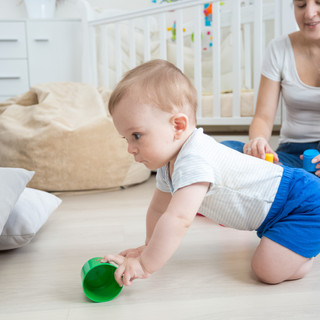Primitive Reflexes and Why Every Parent Needs to Know About Them
- Emily Prentice
- Nov 9, 2016
- 3 min read
You baby is born with a set of reflexes that help them to survive during the first few months after their birth. These infant reflexes (called primitive reflexes) should systematically disappear and your baby should develop new, adult (postural) reflexes. For some children, this process is interrupted; their primitive reflexes do not disappear and they fail to develop postural reflexes. This can lead to all sorts of developmental delays and can even be the root cause of many symptoms of ADHD, Autism, Aspergers, Sensory Processing Disorder, and Dyslexia.
Moro (startle) Reflex
Stimulus: Any sudden change in head position or any of the five senses: light, sound, touch, smell, or taste
Response: The baby’s arms first stretch open and then grasp forward. Their sympathetic nervous system is also activated and it triggers a physiological fight-or-flight response.
Function:
Helps baby survive during the first few months after birth
Alerts caregiver to possible danger
Helps stimulate breathing after birth
Early fight-or-flight response
Children with a retained Moro are consistently put in a state of heightened arousal. This can have a huge impact on their ability to function. Children learn to cope with this in different ways. Some become very anxious, fearful of things that might trigger this reflex, while other become over-excitable, using the reflex like an adrenaline rush.
Symptoms if retained:
Over-reactive
Hypersensitive
Hyposentitive
Hyperactive
Poor balance and coordination
Visual-perception problems
Poor impulse control
Emotional immaturity
Motion sickness
Immune issues
Anxiety
Low self-esteem
Stimulus bound
Tonic Labyrinthine Reflex (TLR)
Stimulus: Flexion or extension of the head
Response: The arms and legs flex when the head flexes and extend when the head extends
Function:
Helps baby get into a good position for birth
Helps baby adapt to a world with gravity
Helps develop muscle tone
The TLR is triggered by a specific change head position (detected by the vestibular system). The vestibular system also has connections to the child’s visual, auditory, and motor control systems. Children with a retained TLR have an immature vestibular system and often have immaturity in these other systems as well. Their brain receives mismatched information from each of these sensory systems.
Symptoms if retained:
Poor balance and coordination
Visual perception problems
Motion sickness
Under or over developed muscle tone
Poor posture
Toe walking
Spinal Galant Reflex
Stimulus: Any tactile stimulation to the skin on either side of the spine in the lumbar region
Response: Rotation of the hip 45° on that side
Function:
Encourages movement in the womb
Helps during the birth process
Promotes hip flexibility

Children with a retained Spinal Galant often have trouble staying still, particularly while seated. They may be very uncomfortable sitting in chairs that touch the lumbar region of their back or wearing tight pants or pants with tags.
Symptoms if retained:
Difficulty sitting still
Hypersensitivity in the lumbar region (tags, waist bands, ect..)
Some connection to bed-wetting
Asymmetric Tonic Neck Reflex (ATNR)
Stimulus: Rotation of the head to either side
Response: The arm and leg on the “face” side extend and the arm and leg on the “skull” side flex
Function:
Encourages movement in the womb
Helps facilitate the birth process
Develops homolateral movement
Helps keep airway clear
Early hand-eye training
Children with a retained ATNR often have to adjust their posture in order to accomplish everyday tasks. This becomes particularly evident during school when they are using cognitive effort and when they are often required to sit at a desk. Children with a retained ATNR often have “bad” posture and may even be labeled as “lazy” because of it.
Symptoms if retained:
Poor balance and coordination
Avoid crossing the midline
Poor hand-eye coordination
Difficulty writing
Difficulty reading
Difficulty tracking visual information
Symmetrical Tonic Neck Reflex (STNR)
Stimulus: Extension or flexion of the head
Response: When the head extends, the arms extend and the lower body flexes. When the head flexes, the arms flex and the legs extend.
Function:
Helps the infant defy gravity (move from the floor to standing)
Helps with spine alignment
Helps with visual accommodation
Similar to the ATNR, Children with a retained STNR often have to adjust their posture during everyday activities like school. Their postural and visual systems work against rather than with them. Many children try to accommodate this by adjusting their position e.g. they may tuck their legs under them when they sit in a chair.
Symptoms if retained:
Prevent proper crawling
Poor posture
Poor body control
Difficulty with attention and concentration
Poor hand-eye coordination
Difficulty with vertical tracking
To learn more about primitive reflexes or to see what we can do for you child, visit earlyrootstherapy.com



























Comments